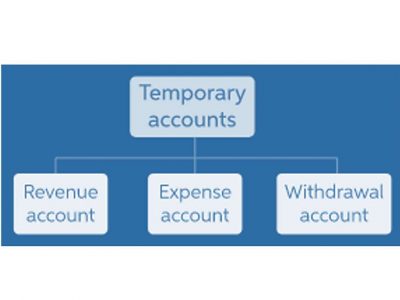What the New Overtime Rule Means for Workers U S. Department of Labor Blog

Still, the future of these employment clauses could hinge on who wins the election. She points to legislative wins over the past four years, including the CHIPS and Science Act and the Inflation Reduction Act, that have created manufacturing and construction jobs. She’s pledged to expand tax credits for companies that create union jobs in steel, iron and other areas of manufacturing and prioritize the retooling of existing plants in factory towns.
Overtime Hourly Rate
It also affects productivity and quality as workers are motivated to give their best. Depending on the scenario, one of the above shift differentials may https://x.com/bookstimeinc be applied to your employees. In the context of blue-collar workers, shift differential pay is particularly relevant because of the nature of their work that demands their presence.
Get 3 months free* when you sign up for payroll processing today.
Employees in senior-level (SL) and scientific or professional (ST) positions who are paid under 5 U.S.C. 5376 are not excluded from the definition of « employee » in 5 U.S.C. 5541(2). Because the workweek ends in this pay period, we do want to pay any overtime earned for that entire workweek. The employee worked 42 total hours in the workweek of Sunday, April 28th-Saturday, May 4th. Therefore, the employee is owed 2 hours of OT premium, even though only 26 of those hours are paid in this pay period. The department’s final rule, which will go into effect on July 1, 2024, will increase the standard salary level that helps define and delimit which salaried workers are entitled to overtime pay protections under the FLSA. Note that certain states have their own methods for calculating the regular rate of pay for nonexempt employees who are paid a flat sum bonus.
Cutting Biden-era regulations

If CA’s investigation does not reveal an actionable consumer law claim, you will receive an e-mail that states CA will not represent you in any further pursuit of your potential claim(s). Many of the arguments initially raised by the plaintiffs appear to have been foreclosed by the 5th U.S. Department of Labor, said Brett Coburn, an attorney with Alston & Bird in Atlanta.
The federal overtime laws require employers to compensate employees at least time and a half or double time for the extra time they put in. Time and a half is equivalent to more than 50% of an employee’s standard wage. For every hour of overtime, employees get their regular hourly rate, 1.5 times. For covered, nonexempt employees, the Fair Labor Standards Act (FLSA) requires overtime pay (PDF) to be at least one and one-half times an employee’s regular rate of pay after 40 hours of work in a workweek.

A History of Overtime Law and the FLSA
For example, a 10% differential on a $20/hour base rate would result in $22/hour for the differential shift. To refine the discussion around “overtime tax rate” ledger account and the consideration of “How much overtime is too much,” it’s pertinent to clarify that the taxation on overtime does not operate under a distinct rate. It’s wise to consult with tax professionals or use reliable tax calculators to estimate the impact of overtime on your net income accurately. So, even if you move into a higher tax bracket, only the portion of income within that bracket is subject to the higher tax rate. As the senior tax editor at Kiplinger.com, Kelley R. Taylor simplifies federal and state tax information, news, and developments to help empower readers. Kelley has over two decades of experience advising on and covering education, law, finance, and tax as a corporate attorney and business journalist.

It will also limit the forecasting capabilities as predicting labor costs becomes more complex with variable shift differential rates. This is a unique type of shift differential, which is not strictly time-based but instead working conditions. Some companies pay blue-collar workers additional compensation for shifts that involve hazardous work conditions.

In such cases, employers must use the blended rate or weighted average of all rates paid in order to calculate the overtime premium due for hours worked over 40 in the workweek. Note that the FLSA has an exception to this rule that allows employer to pay overtime via the “rate in effect.” Most states, however, do not permit this method. An employer who requires or permits an employee to work overtime is generally required to pay the employee premium pay for such overtime work.
- There are legislations in place to ensure fair treatment for employees and provide employers with clarity on the amount to pay employees for overtime.
- Employees may be exempt from the FLSA and, thus, not entitled to overtime if they earn a salary that exceeds the FLSA minimum salary requirements and perform job duties that satisfy one of the established overtime-exempt roles.
- An estimated 30 million Americans have signed noncompete agreements with their employers.
- By signing this agreement, you agree to give CA the exclusive right to investigate your potential consumer law claim(s) for the next 180 days (“Exclusive Investigative Period”).
- Overtime pay provided under title 5, United States Code, is pay for hours of work officially ordered or approved in excess of 8 hours in a day or 40 hours in an administrative workweek.

If you also work overtime, you’ll receive an extra 30% of your hourly rest day rate. Use the formula provided for special non-working days to compute your overtime pay. Workplace policies should define the overtime hours your employer might expect and dictate the compensation you should receive. There are legislations in place to ensure fair treatment for employees and provide employers with clarity on the amount to pay employees for overtime. If your employer misclassifies you as an exempt employee, you could miss how much is overtime pay out on overtime pay and other protections under CA Labor Code 510. Misclassification can occur intentionally or by mistake, especially if your job duties don’t align with exemption criteria.
